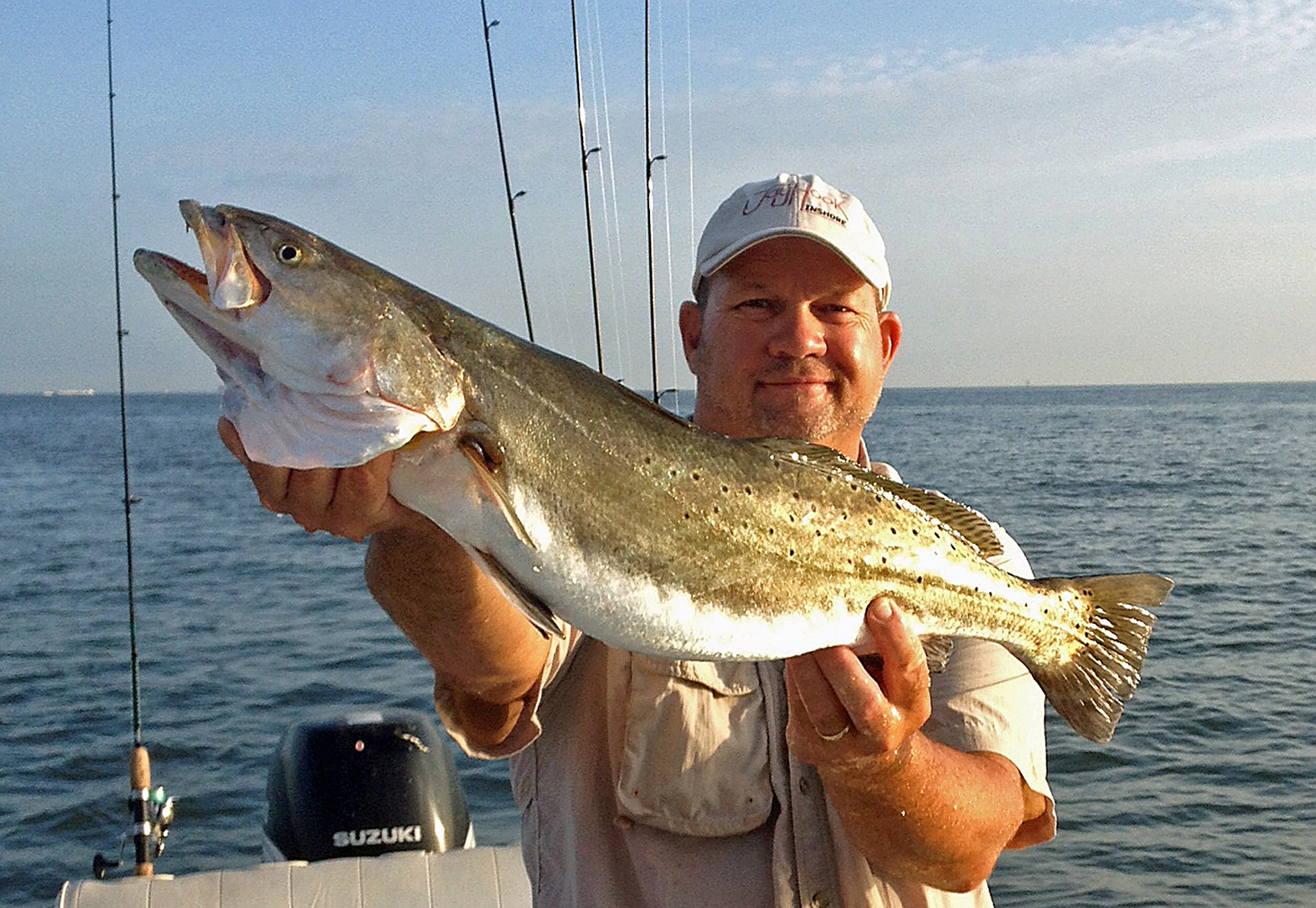By DAVID RAINER, Alabama Department of Conservation and Natural Resources
The length and bag limits of two of Alabama’s most popular inshore fish species will likely change soon after proposals by the Alabama Marine Resources Division were approved last weekend by the Alabama Conservation Advisory Board.
Under the new regulations, spotted seatrout (speckled trout) and southern flounder will have reduced bag limits to deal with concerns that the species are not able to sustain healthy populations.
Speckled trout will go to a slot limit of 15 to 22 inches (total length, TL) with one fish allowed over 22 inches (TL). The previous length limit was 14 inches. The regulation is similar to that for redfish, which has a slot limit of 16 to 26 inches with one fish allowed over 26 inches. The bag limit for speckled trout will also be reduced from 10 fish to six fish.
The flounder population, which appears to be in worse condition than trout, will move from a 10-fish bag limit to five fish, and the minimum size will be increased from 12 inches to 14 inches (TL).
Kevin Anson, Marine Resources’ Chief Marine Biologist, said a series of public meetings were held to enlist input from the public about possible changes to the trout and flounder regulations.
“We had some assessments that were conducted independently through the University of South Alabama, and the report indicated that both species are in decline,” Anson said. “The spotted seatrout assessment has shown that in the last five to seven years that the breeding stock is not at a sustainable level. The stock is not in critical decline, but we need to make some changes now to ensure it does not get there.
“Southern flounder is under a little more critical designation, according to the assessment results. We recommend the 14-inch minimum size. About 25% of the females will be mature enough to spawn at 12 inches. Just under 50% will be mature between 14 and 15 inches.”
The regulations approved by the Board for commercial harvest of flounder will add a daily trip limit of 30 fish per vessel. Speckled trout is designated as a game fish and no commercial harvest is allowed.
Anson said there has been a significant increase in commercial fishing license sales since about the time of the Deepwater Horizon oil spill, and those license numbers remain relatively high. Those licenses are in addition to the commercial gill net license holders that also target flounder commercially.
“So, we are trying to constrain some of that harvest,” he said. “We felt that (30-fish trip limit) in addition to the reduction in the recreational bag limit would help curb some of that harvest.”
Marine Resources will also implement a closure of both commercial and recreational flounder fishing annually for the month of November during the flounder’s spawning run.
Anson also gave the Board an update on Marine Resources’ effort to spawn flounder at the Claude Peteet Mariculture Center in Gulf Shores.
“We started collecting brood stock of southern flounder last year,” Anson said. “We will be trying to spawn those fish this coming winter, when they normally spawn in the wild. Researchers have found this species of fish takes a long time to acclimate to be able to spawn in a captive situation.”
If the flounder spawning is successful, Anson said Marine Resources plans to release between 50,000 and 60,000 juvenile flounder annually.
The Board also approved a request from Marine Resources to implement a Gulf reef fish endorsement to distinguish those anglers who fish for red snapper and other reef fish from saltwater anglers who fish for other species.
The endorsement, which would go into effect for the 2019-2020 license year, would cost $10 for individual anglers. Charter boat fees would range from $150-$250, and commercial vessels would be assessed at $200 per vessel.
“This will give us better accounting of who is actually going offshore and taking part in the reef fish harvest,” Anson said. “Currently, we just have a saltwater license that has no designation as to what type of fishing that person will do with that license. We can contact those who purchase the endorsement and ask questions about their fishing behavior.”
Anson said the money raised from the endorsement would be used to replace research funding from federal sources and the Deepwater Horizon oil spill restoration funds that will no longer be available after this year. The funds from the reef fish endorsement can only be used for research and management of reef fish.








